The Pere Lachaise Cemetery in the 20th arrondissement of Paris is the largest operating cemetery in the French capital. The landscaped funeral park is like an open-air museum, as many graves have been listed as Historic Monuments. The Père Lachaise is the world’s most visited cemetery, where visitors cross the graves of Jean de la Fontaine, Molière, Jim Morrison, Edith Piaf, Oscar Wilde, and Yves Montand.
The origins and history of the Pere Lachaise Cemetery

The Pere Lachaise Cemetery owes its name to Père François de la Chaise (1624-1709), the confessor of King Louis XIV, who resided in the Jesuit building and stood on the site of the chapel.
Alexandre-Théodore Brongniart laid out the cemetery as we know it today, which opened in 1804.
In 1804, the Père Lachaise contained only 13 graves, and to attract more funerals, the administrators organised the transfer of the remains of Jean de la Fontaine and Molière the same year. In 1817, the remains of Pierre Abélard and Héloïse d’Argenteuil were transferred to the Père Lachaise. It became popular to plan his / her own burial among the famous people of Paris.
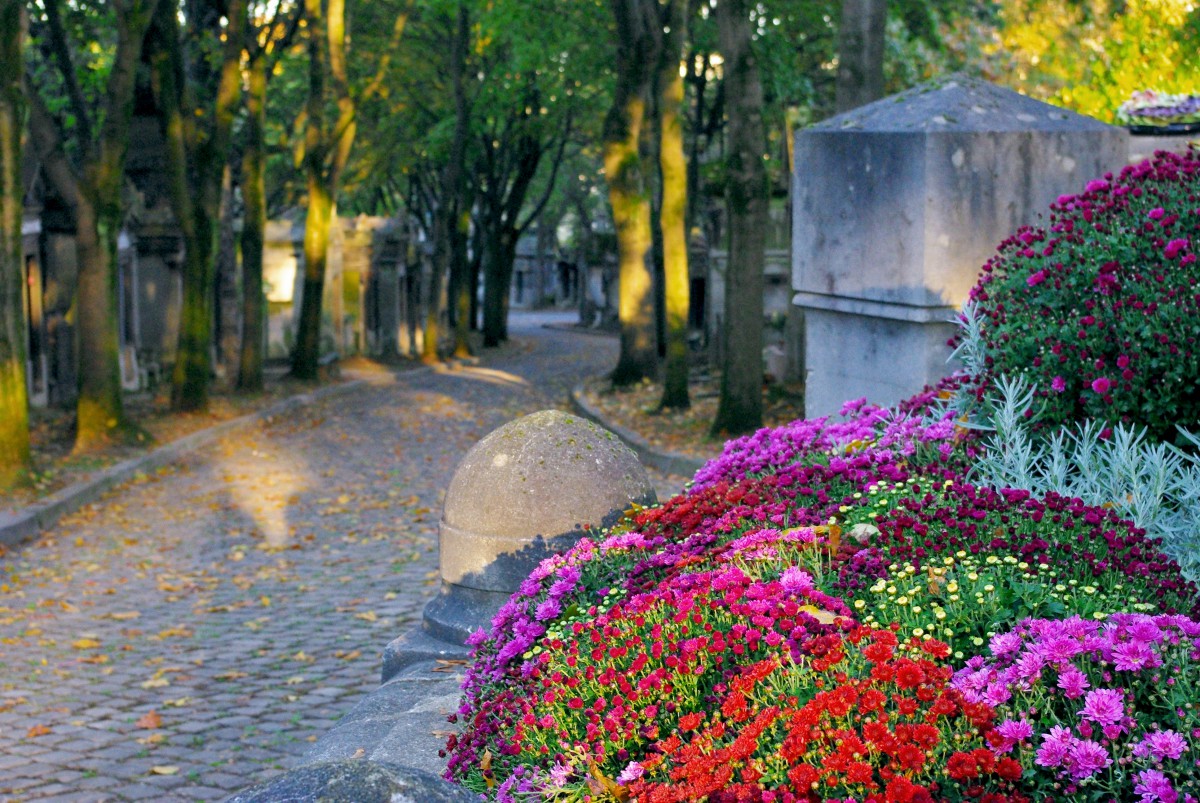
Étienne-Hippolyte Godde designed the funerary chapel in 1823. He built the monumental entrance on Boulevard de Ménilmontant a few years later.
Jean-Camille Formigé designed the Neo-Byzantine columbarium and crematorium in 1894 to hold the remains of the Parisians who had requested cremation.
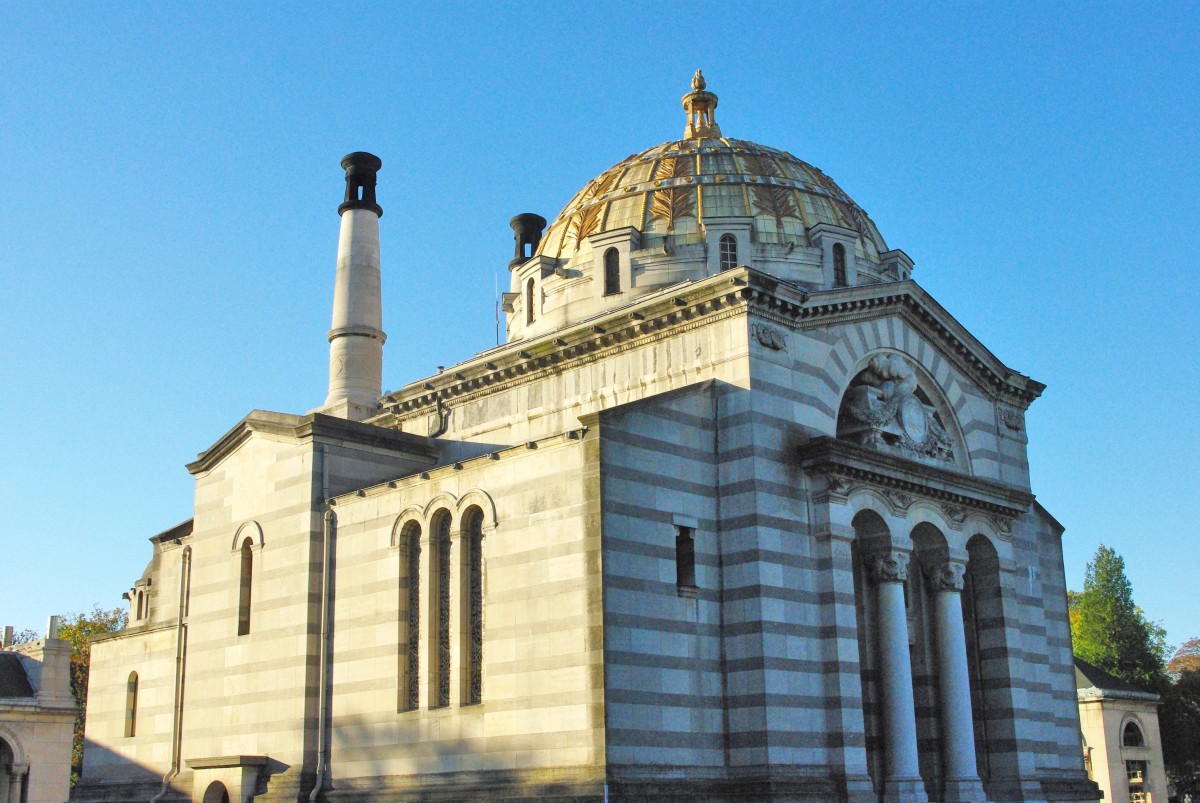
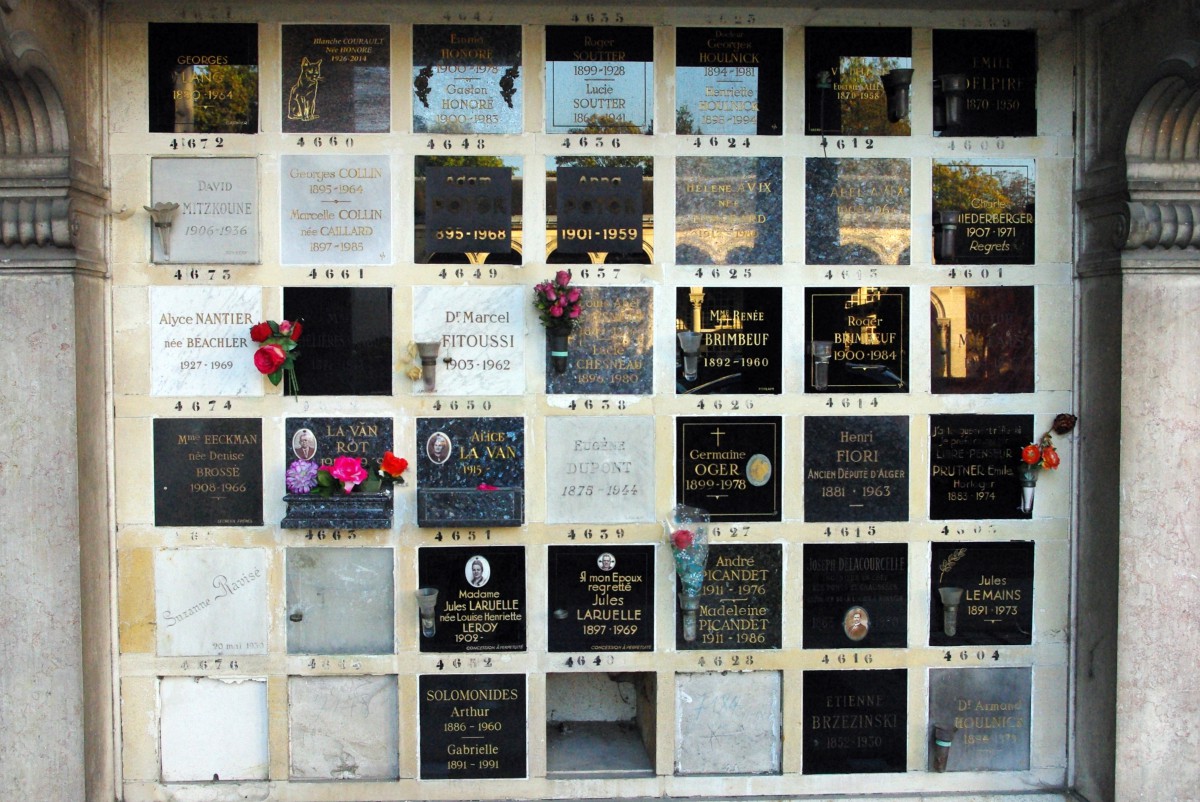
To the southeast of the cemetery, the Communards’ Wall (Mur des Fédérés) is part of the troubled history of Paris. There, the last 147 insurgents of the Paris Commune were shot on 28 May 1871.

Near the wall are a few memorials, including monuments to concentration camp deportees and veterans.
What makes it Paris’ largest cemetery?
The Cimetière du Père-Lachaise has an area of 44 hectares, making it the most extensive garden in Paris (excluding the Bois de Vincennes and Bois de Boulogne). It stretches on sloping ground and has five entrances, with the main entrance being on Boulevard de Ménilmontant (near métro station Philippe Auguste [line 2]).

The Père Lachaise is one of Paris’ largest cemeteries that have been laid out outside the precincts of the old town:
- Montmartre Cemetery in the north,
- Père Lachaise in the east, and
- Montparnasse Cemetery in the south.
- Another smaller cemetery was opened in Passy near the Trocadéro.

The Père Lachaise contains some 70,000 burial plots. Some are simple tombstones, others are monumental graves and family mausoleums. There is a great range of funerary art styles: Egyptian, Classical, Gothic, Renaissance, Art Nouveau…
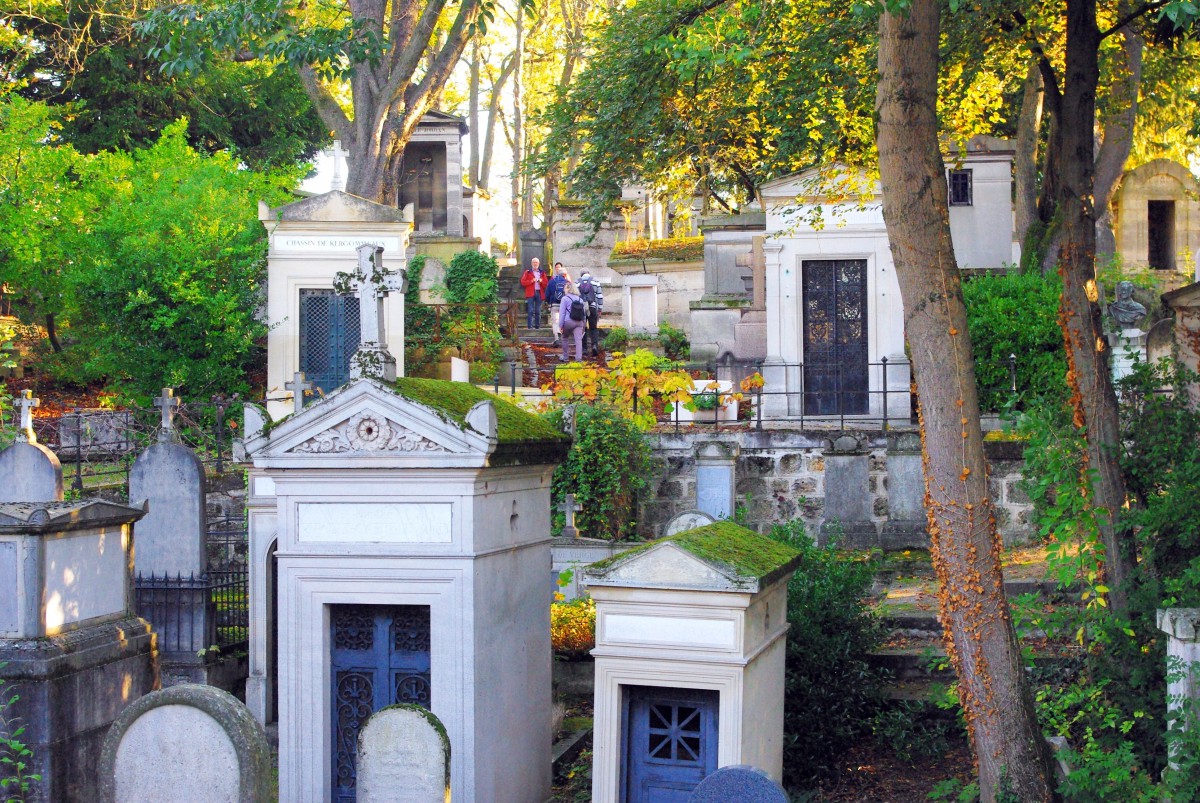


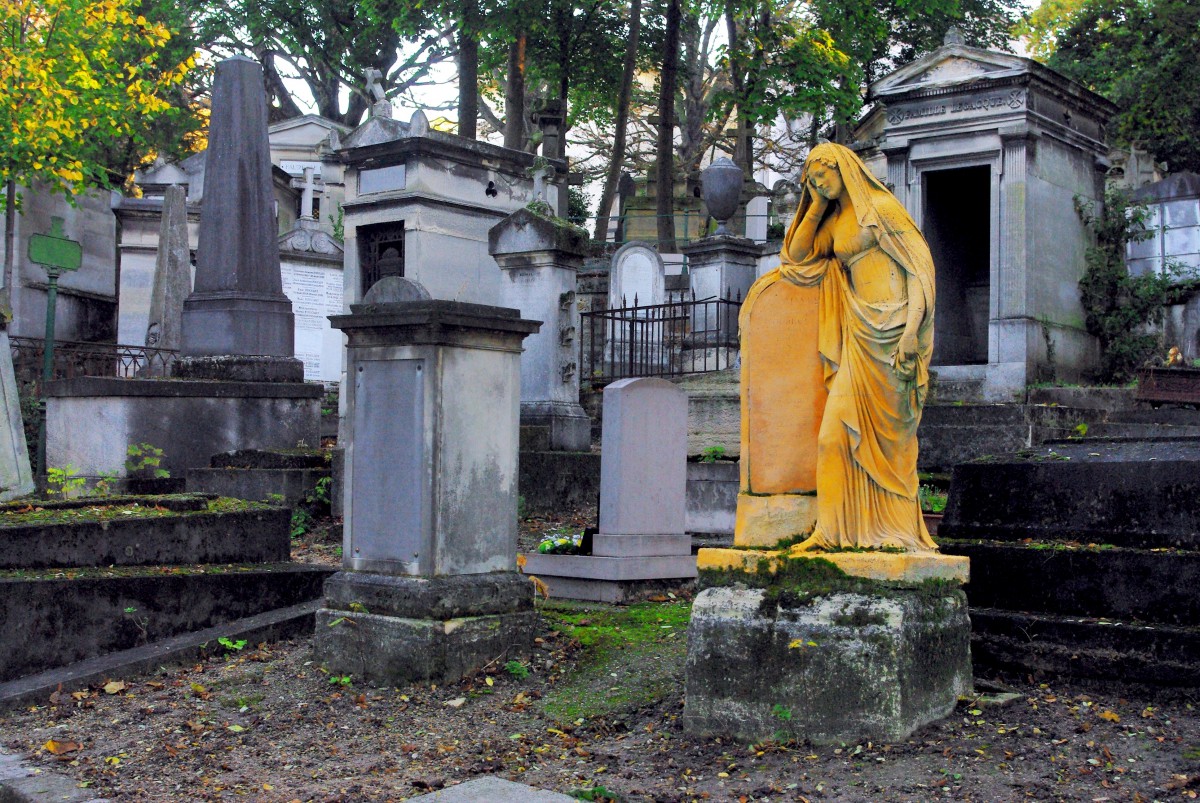
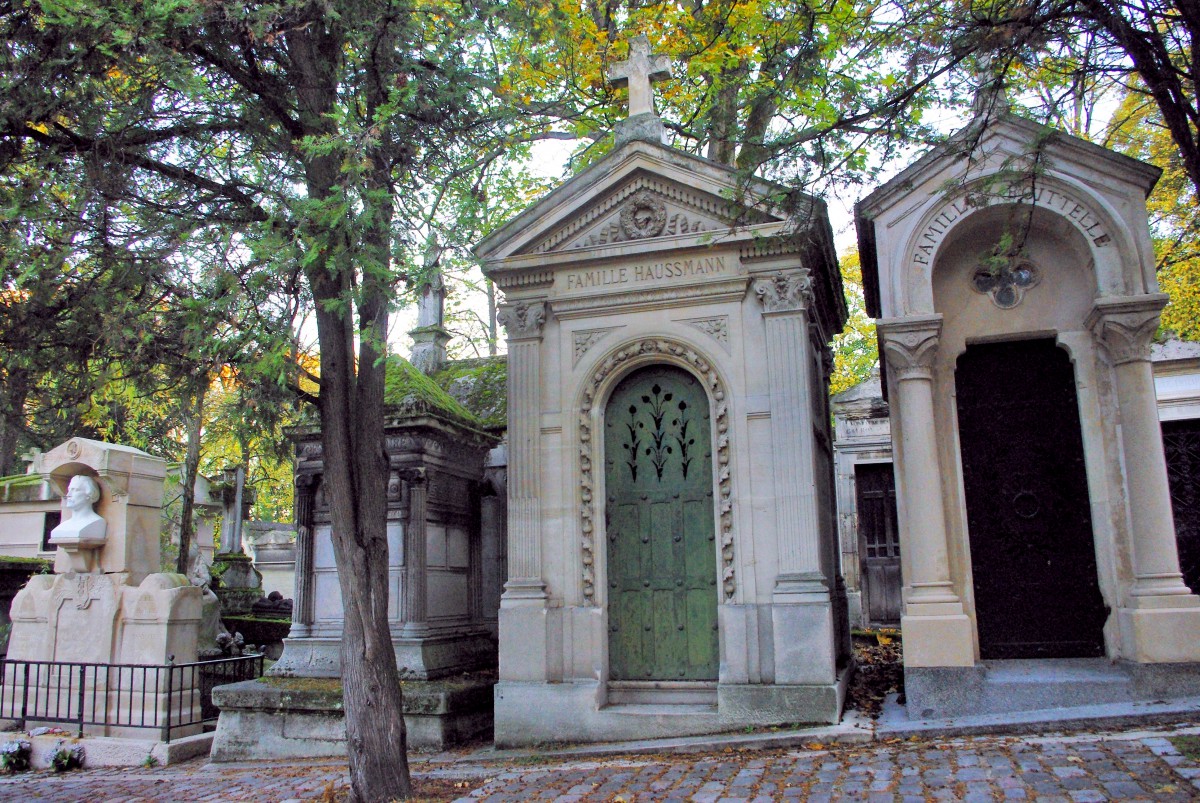
Today there are over 1 million bodies interred in the cemetery. More than 4,130 trees contribute to a particular romantic atmosphere.
It is very difficult to be buried at the Père Lachaise, which has strict rules about burials: only people who died in Paris or who had lived there may be buried there.
There is a fine view over Notre-Dame, the Panthéon, Montparnasse Tower and the Eiffel Tower from the terrace of the chapel.
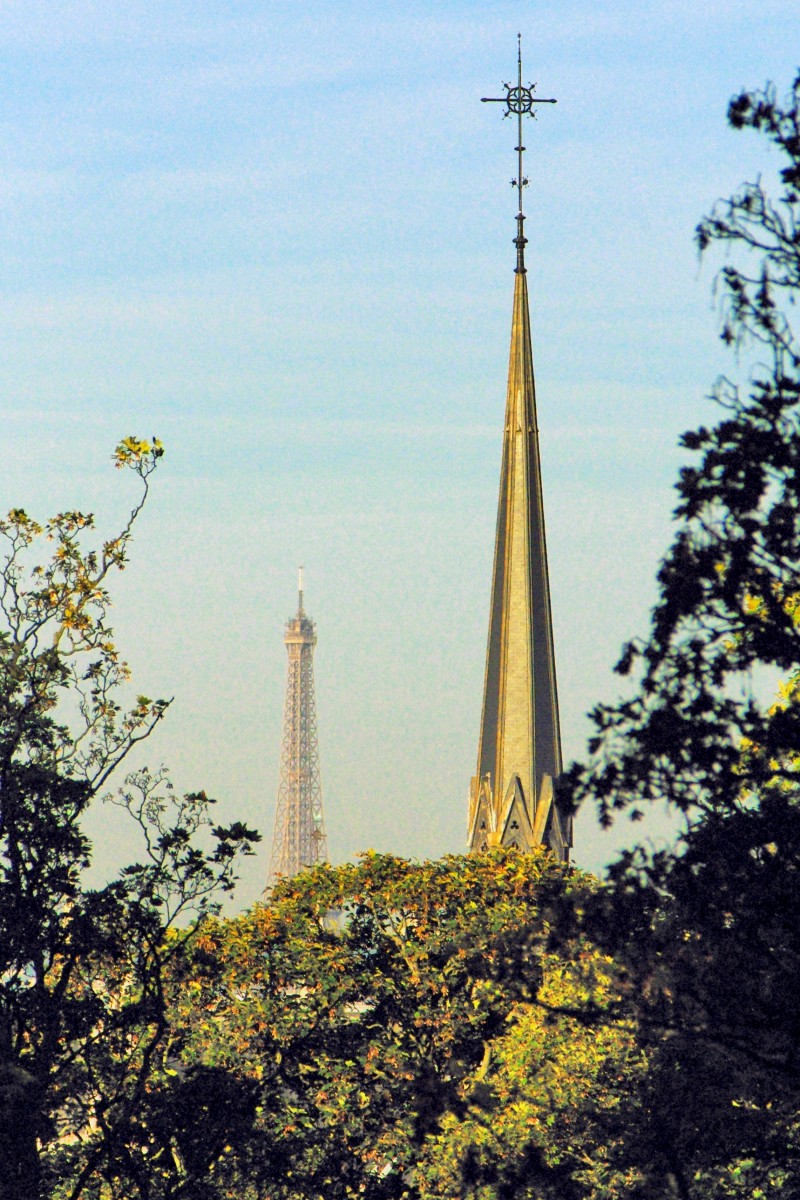

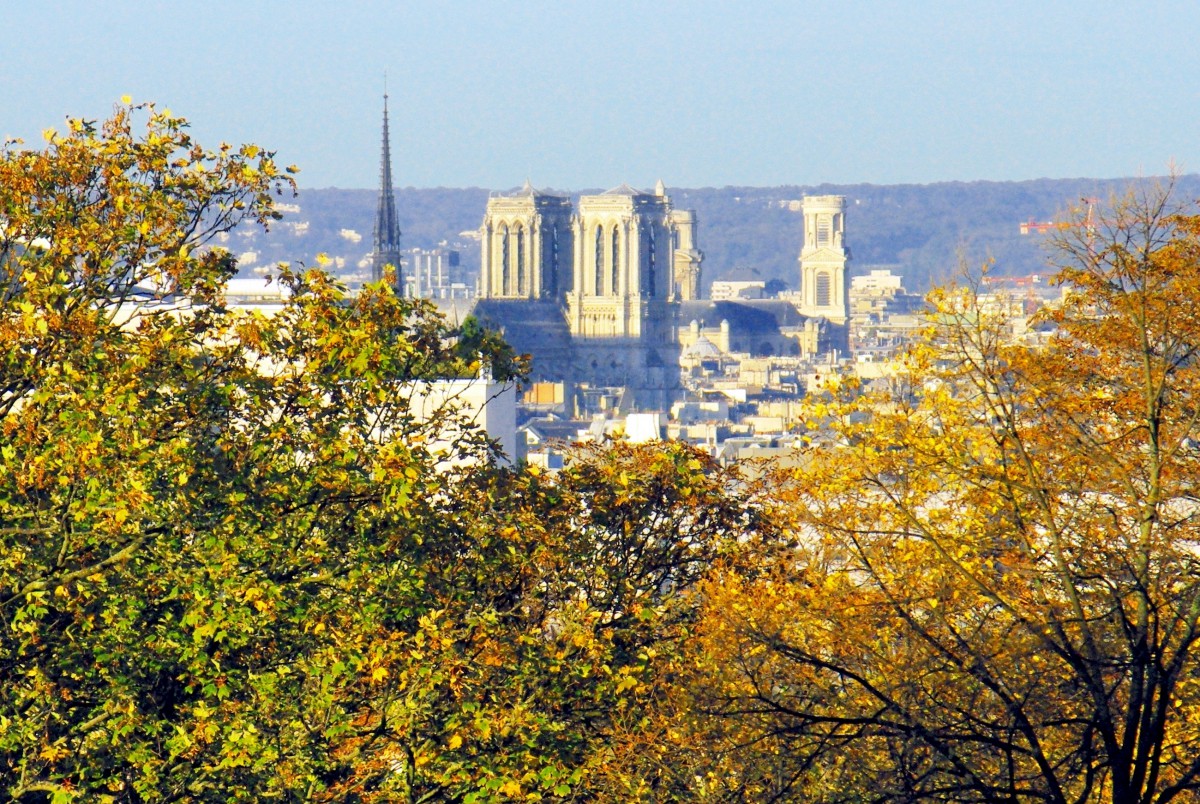
Download the English version of the Père Lachaise cemetery Map with the most-searched-for burial places.
Which famous people are resting in the cemetery?
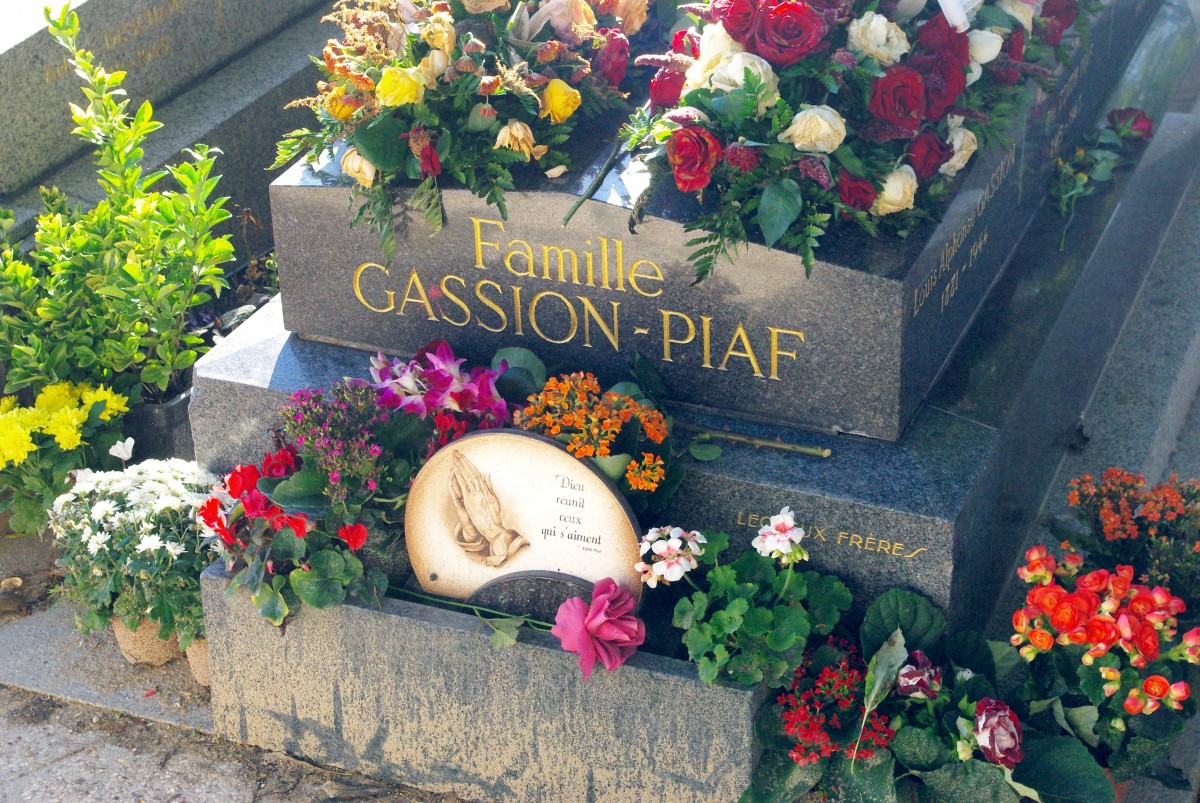
Many famous people (writers, composers, musicians, singers, poets, politicians, and scientists are buried at the Père Lachaise cemetery, including:
- Honoré de Balzac (1799-1850), French novelist
- Georges Bizet (1838-1875), French composer
- Claude Chabrol (1930-2010), French film director
- Frédéric Chopin (1810-1849), Polish composer
- Colette (1873-1954), French novelist
- Félix Faure (1841-1899), former French president in the 3rd Republic
- Jean de la Fontaine (1621-1695), French litterateur
- Molière (1622-1673), French playwright
- Yves Montand (1921-1991), French singer and actor
- Jim Morrison (1943-1971), American singer with The Doors
- Edith Piaf (1915-1963), French singer
- Simone Signoret (1921-1985), French actress
- Oscar Wilde (1854-1900), Irish novelist, poet and playwright
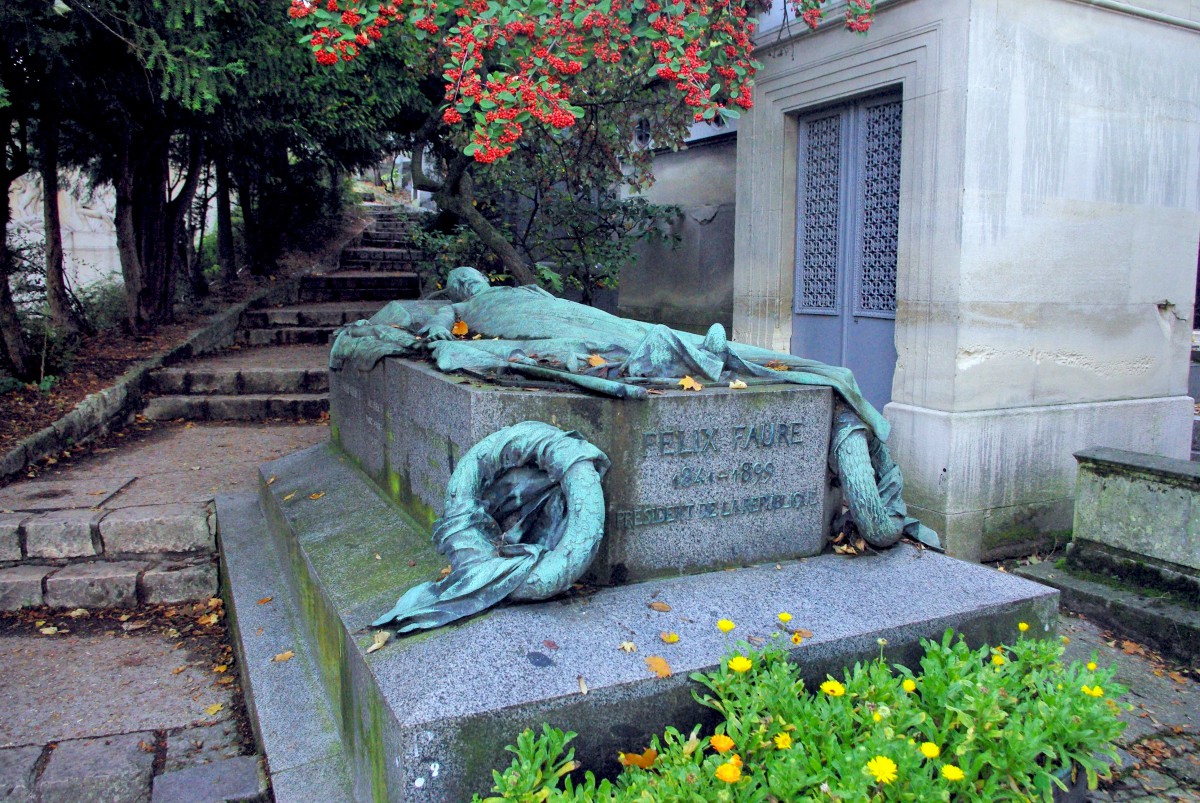
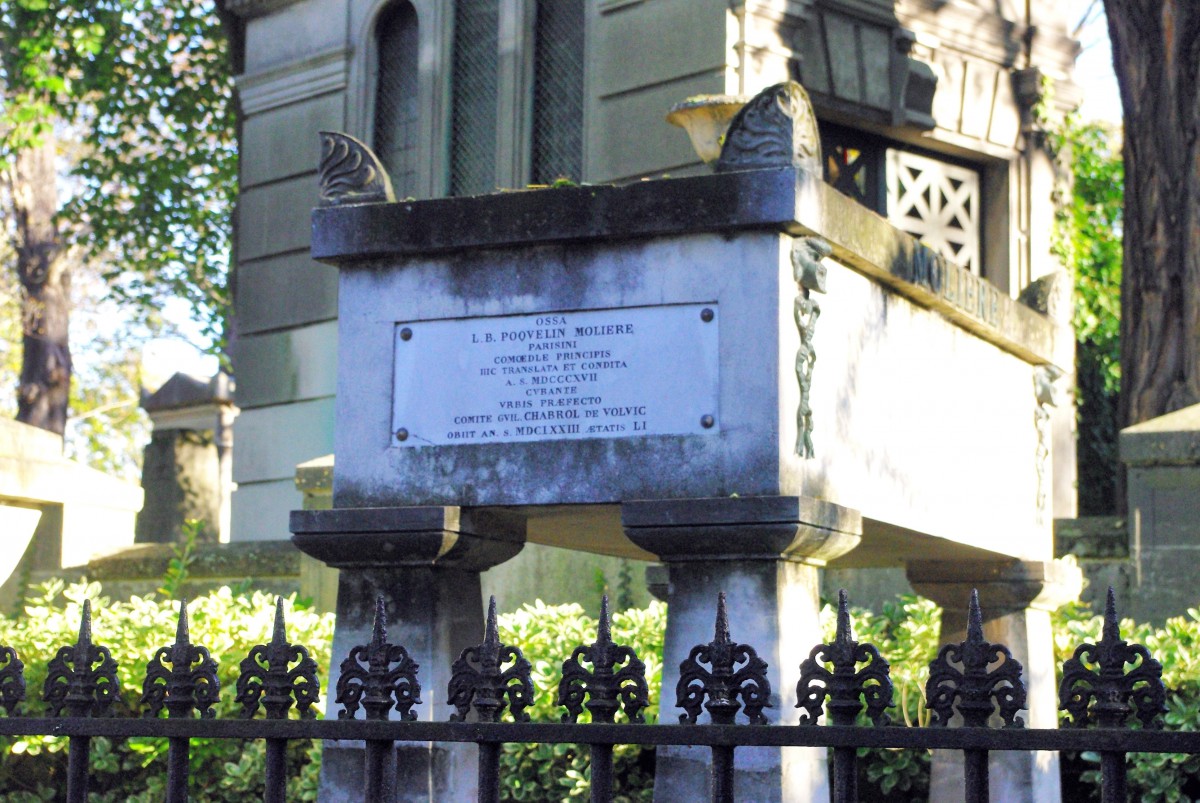
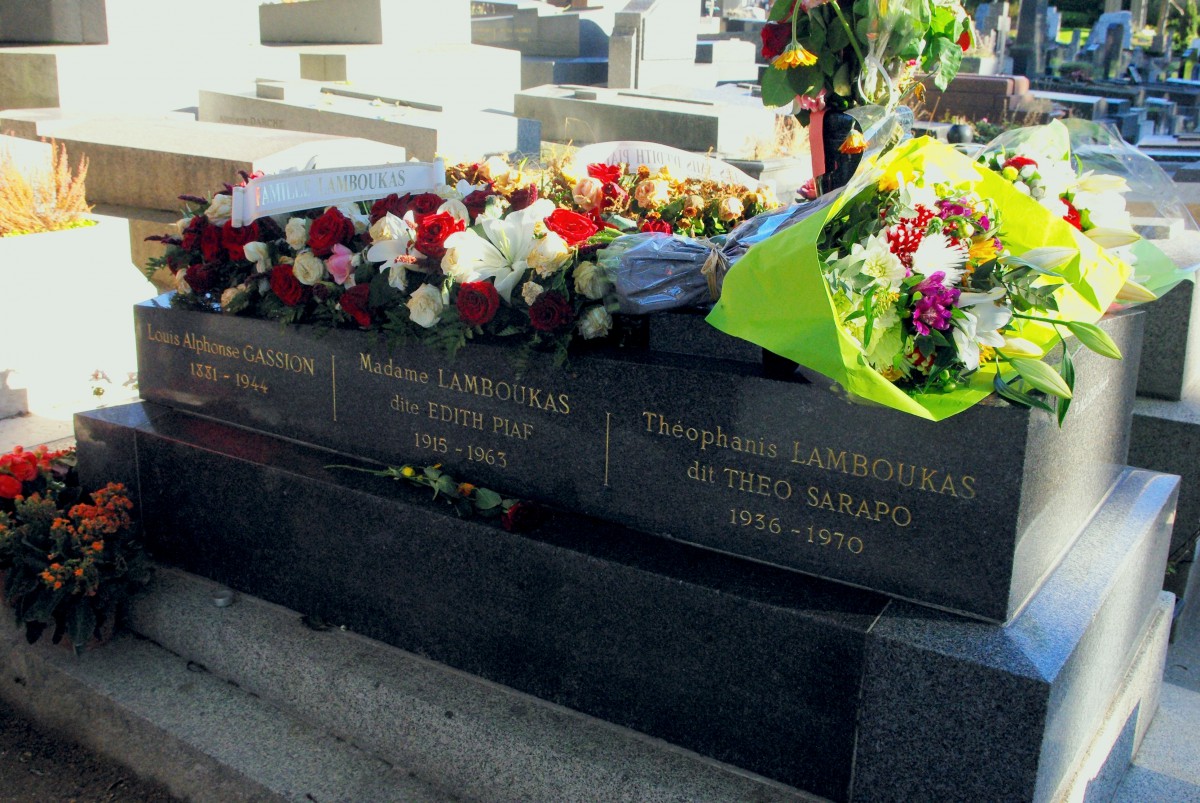
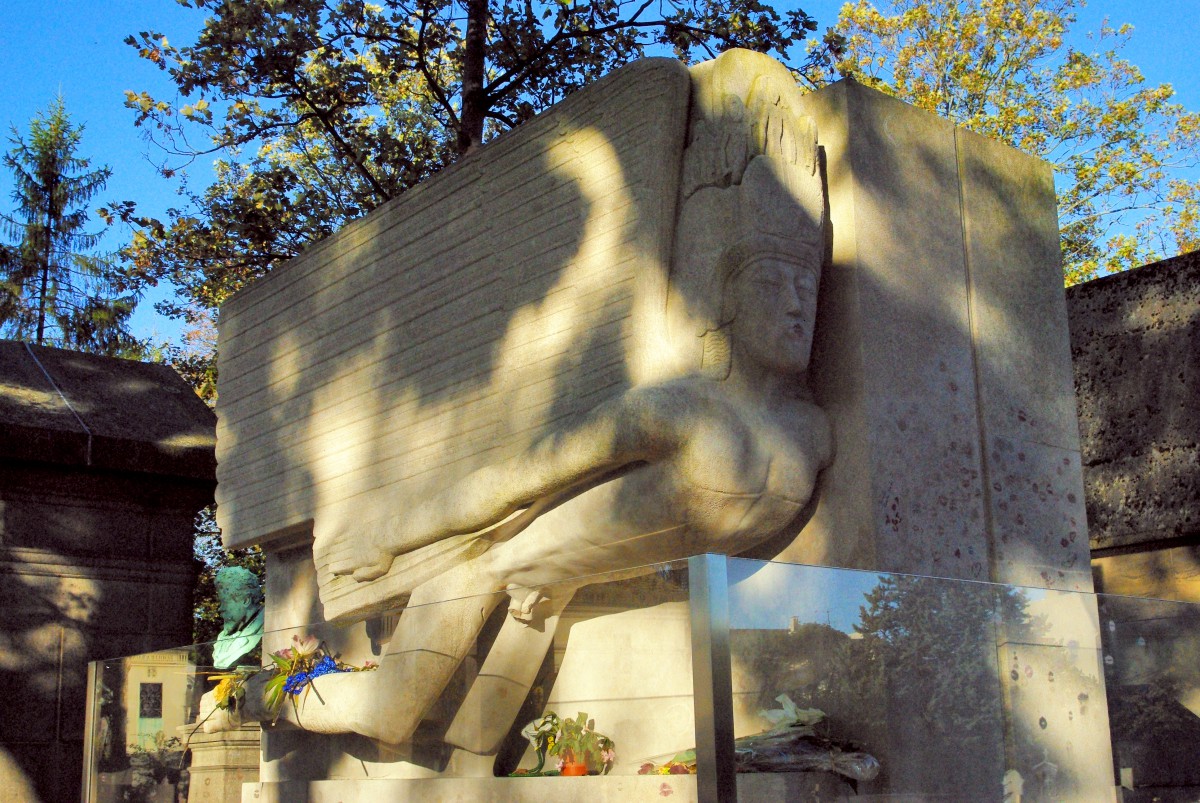
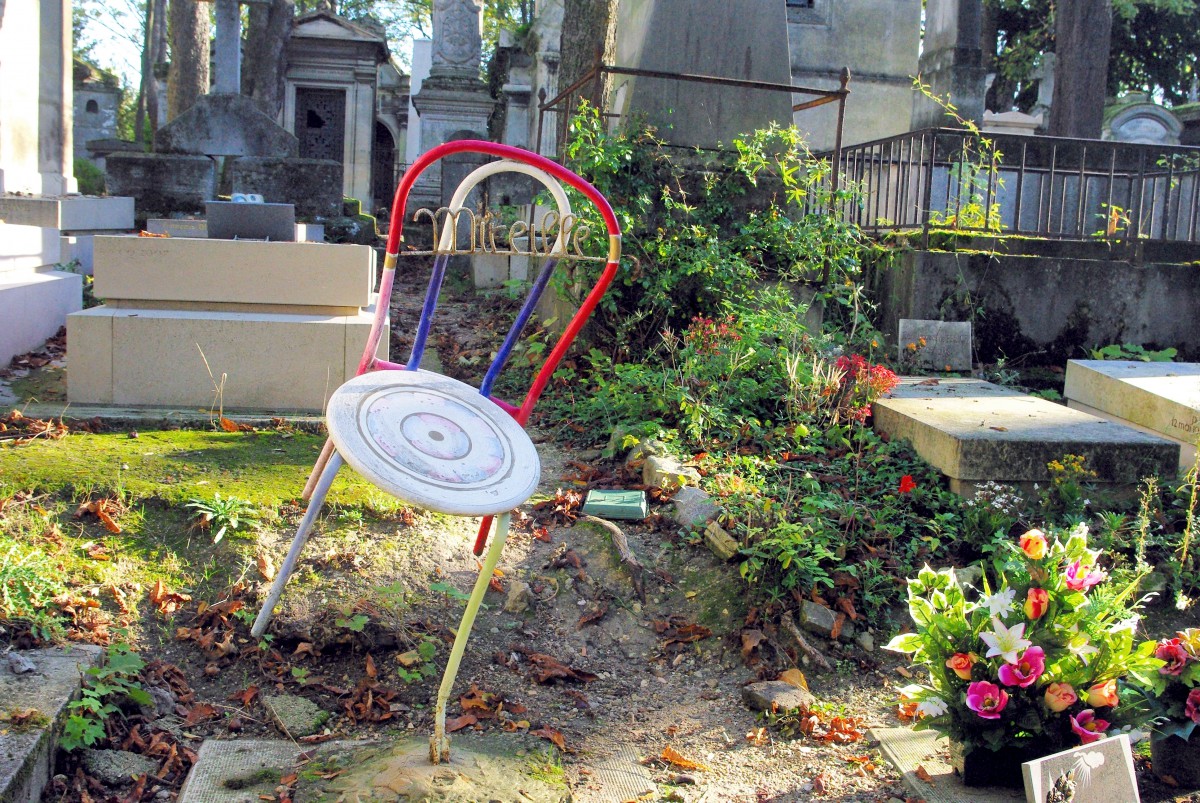
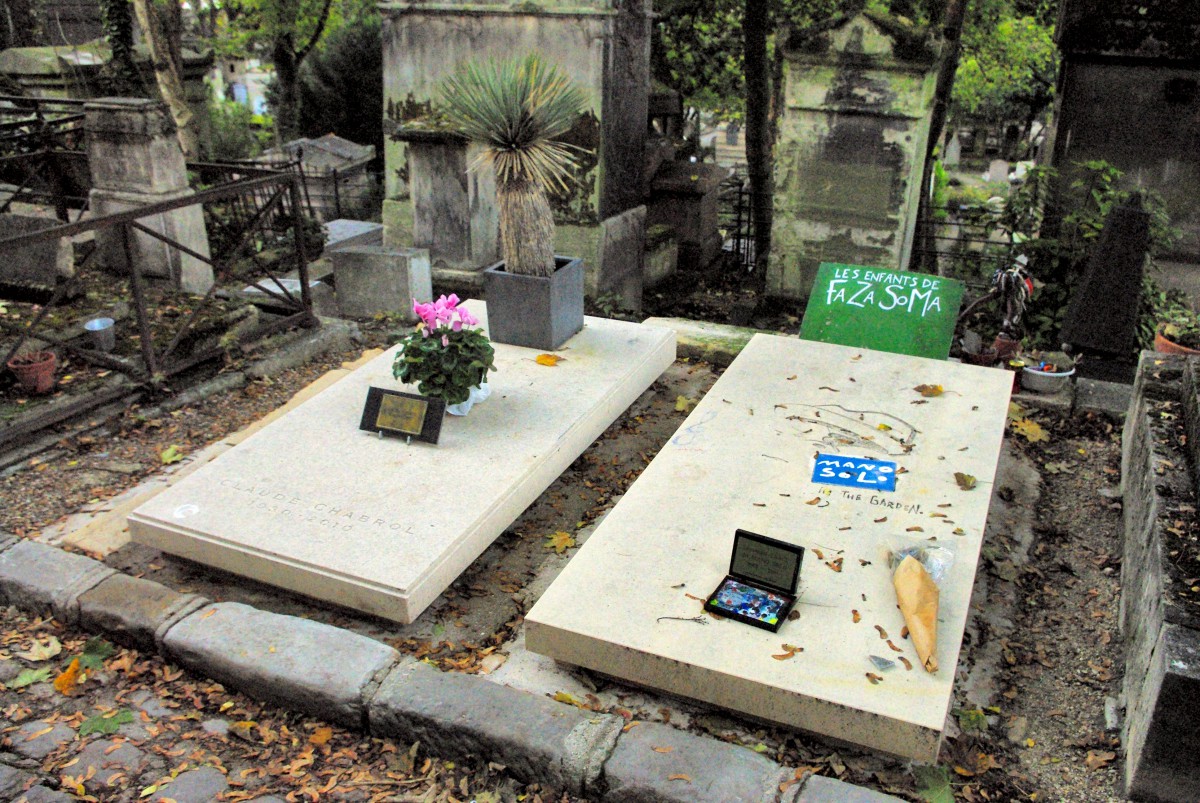
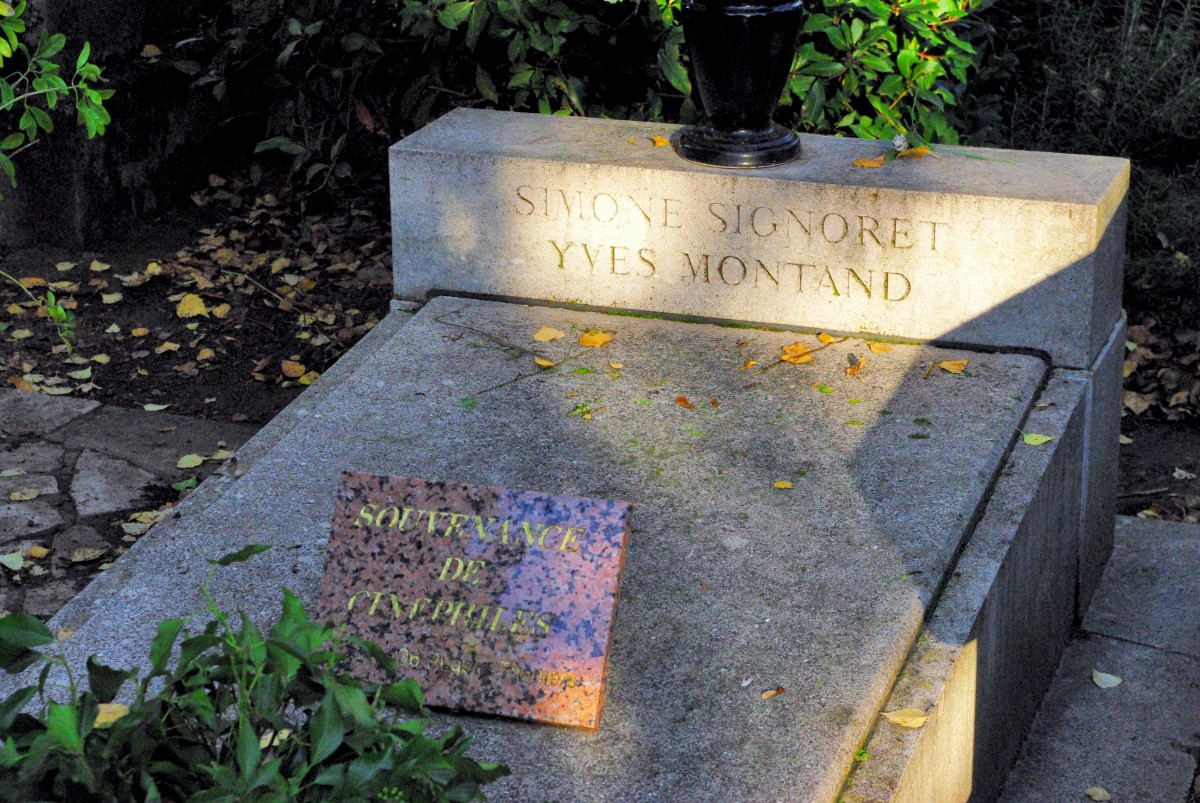

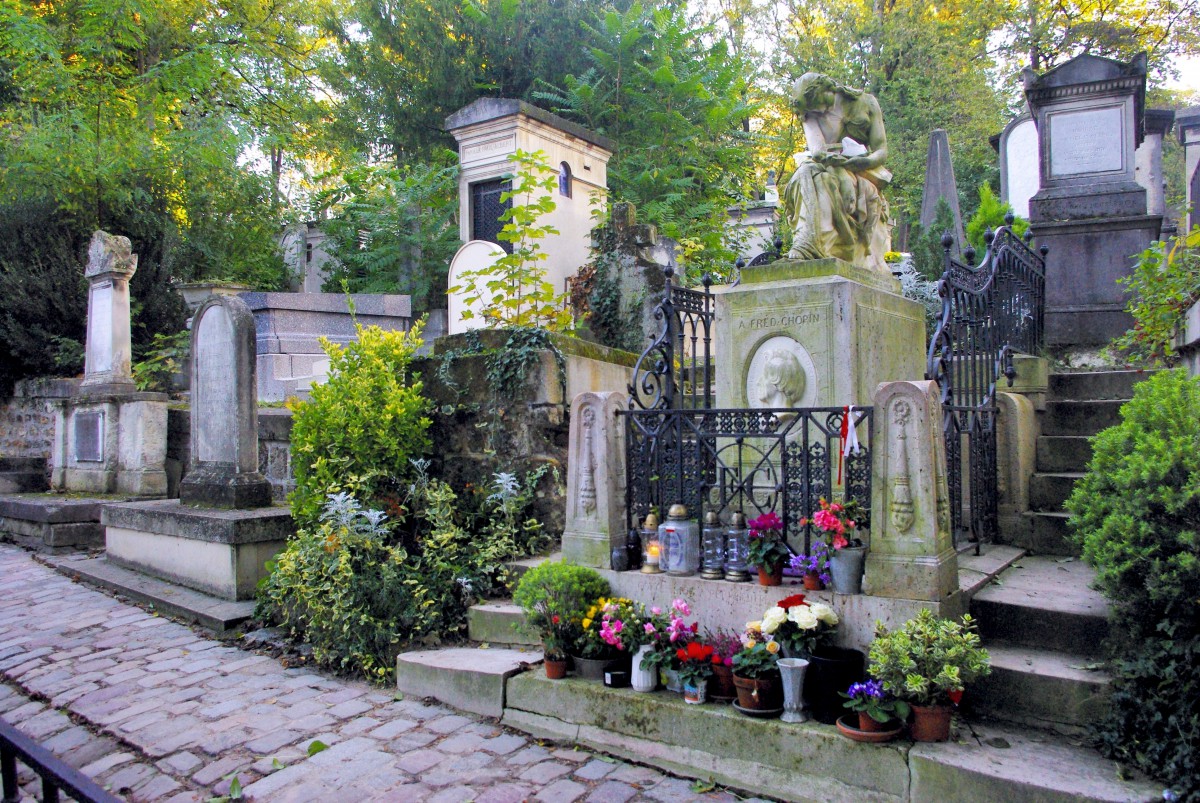
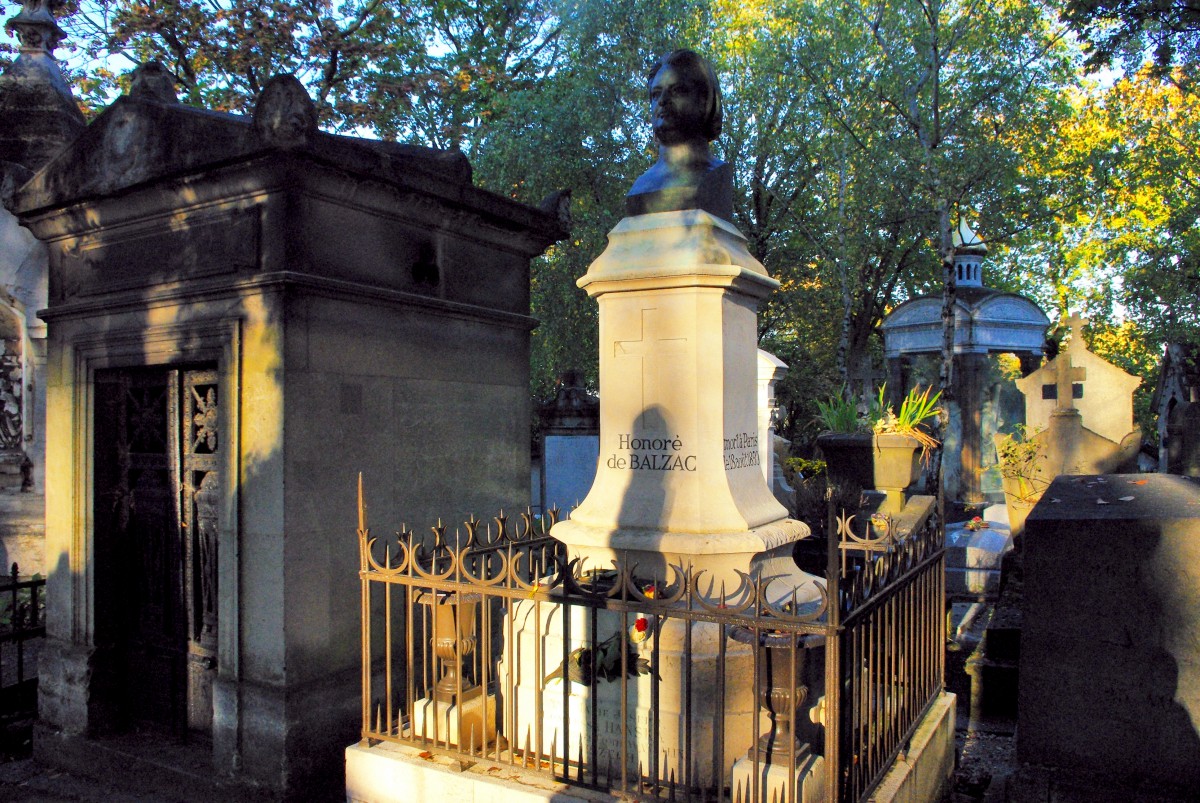
Opening Times of the Père Lachaise cemetery
The entrance is free.
From 6th November to 15th March
- from Monday to Friday: 8 am to 5.30 pm Saturday: 8.30 am to 5.30 pm
- Sundays and bank holidays: 9 am to 5.30 pm
From 16th March to 5th November
- from Monday to Friday: 8 am to 6 pm Saturday: 8.30 am to 6 pm
- Sundays and bank holidays: 9 am to 6 pm
Inside the cemetery, do respect the dead, their families and other visitors by observing silence and behaving decently.
More photos of the cemetery

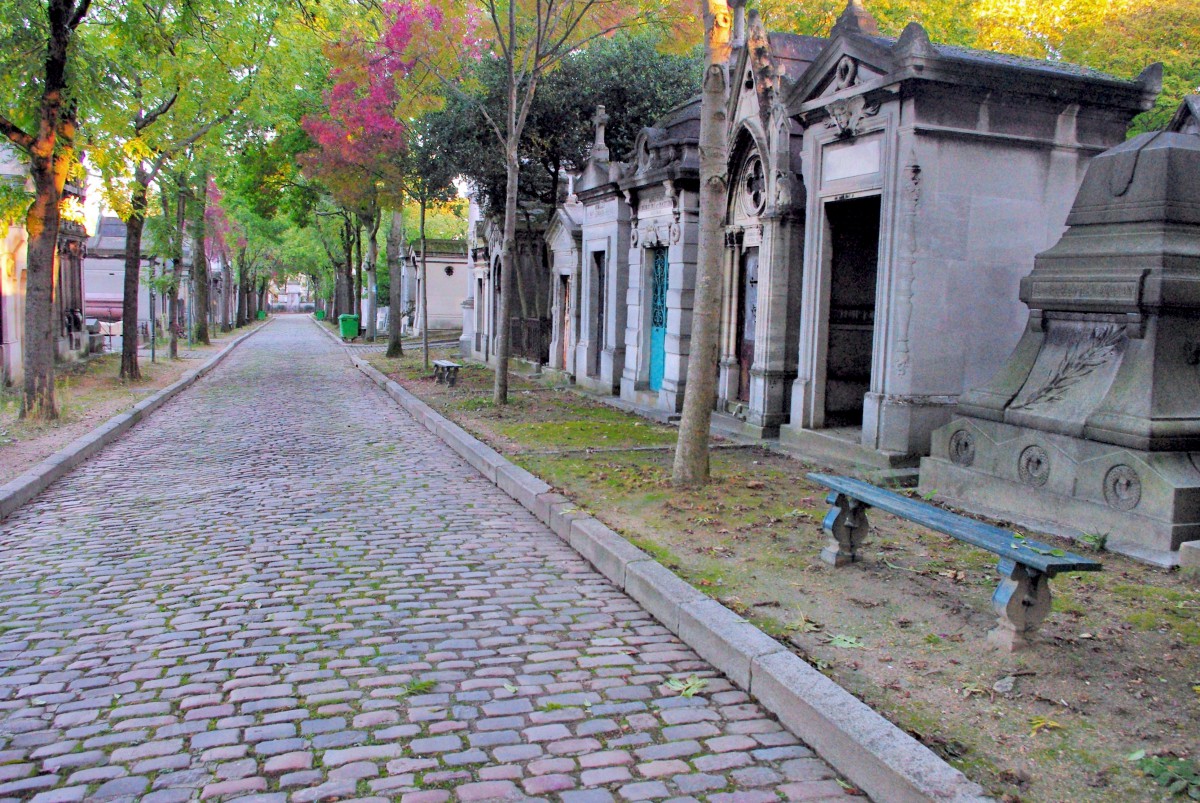
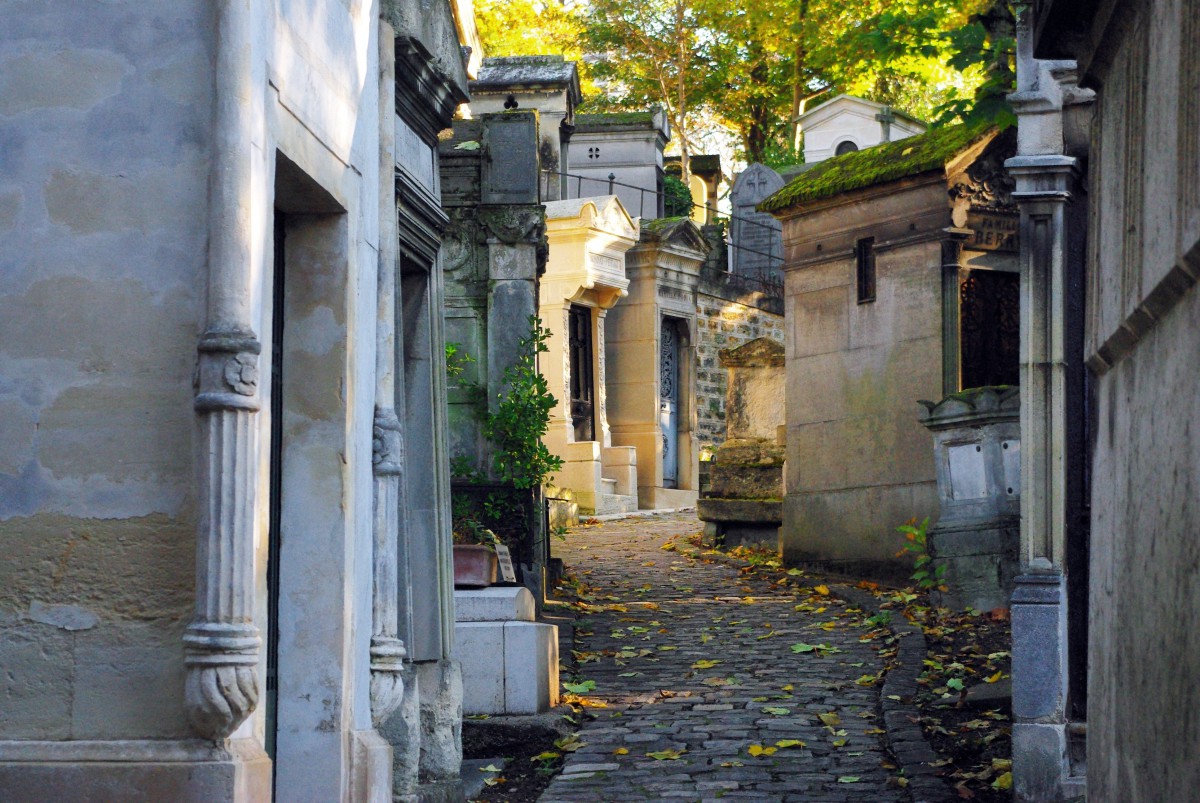
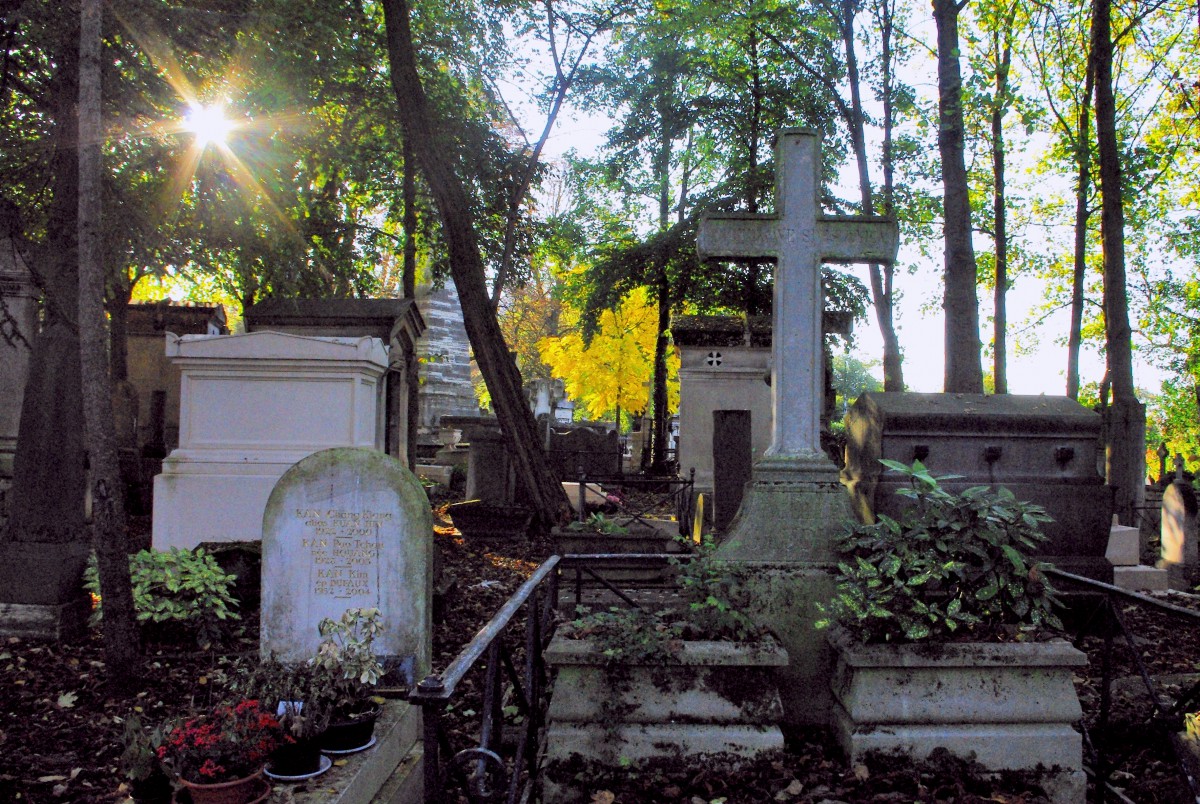
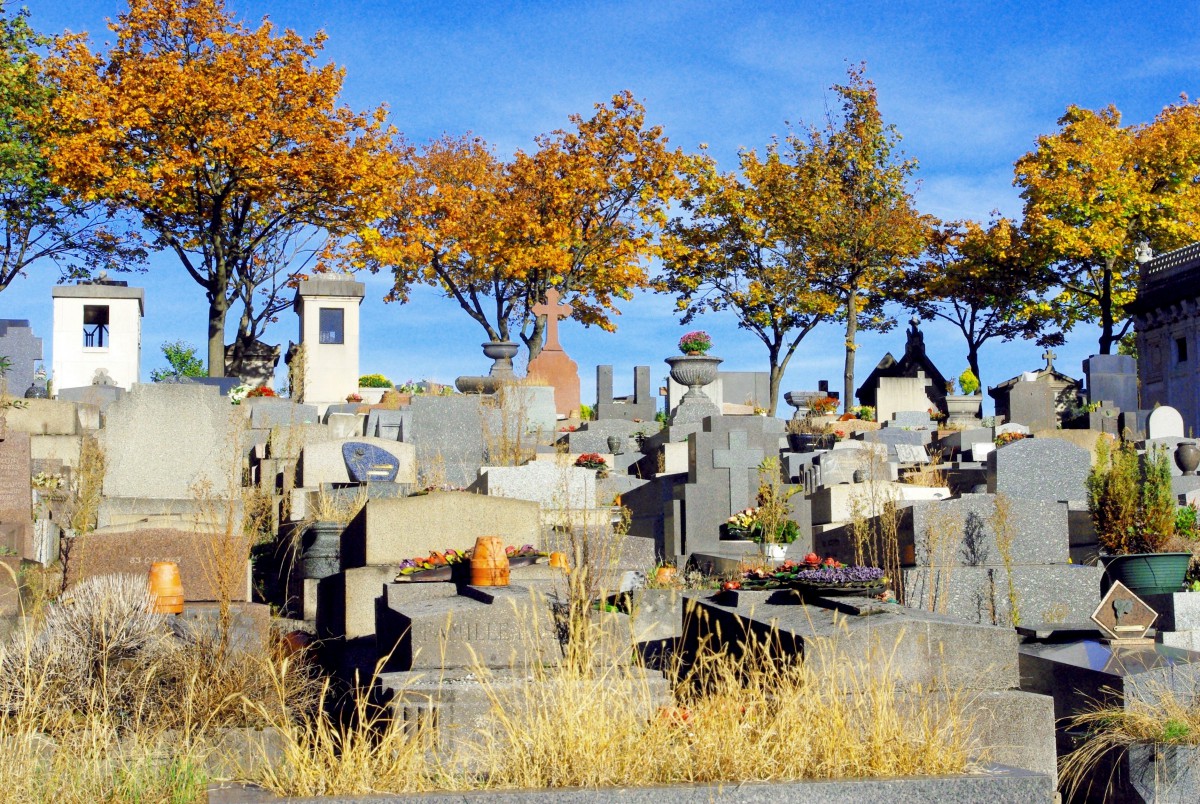
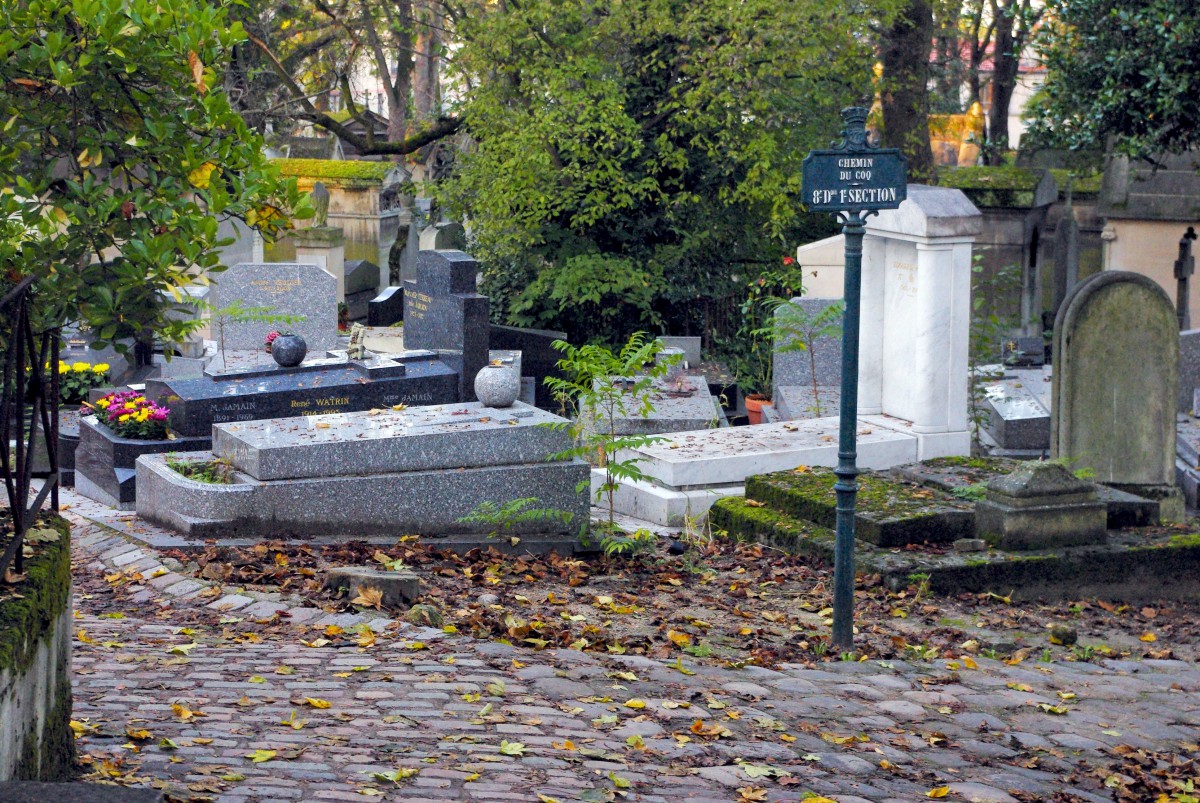
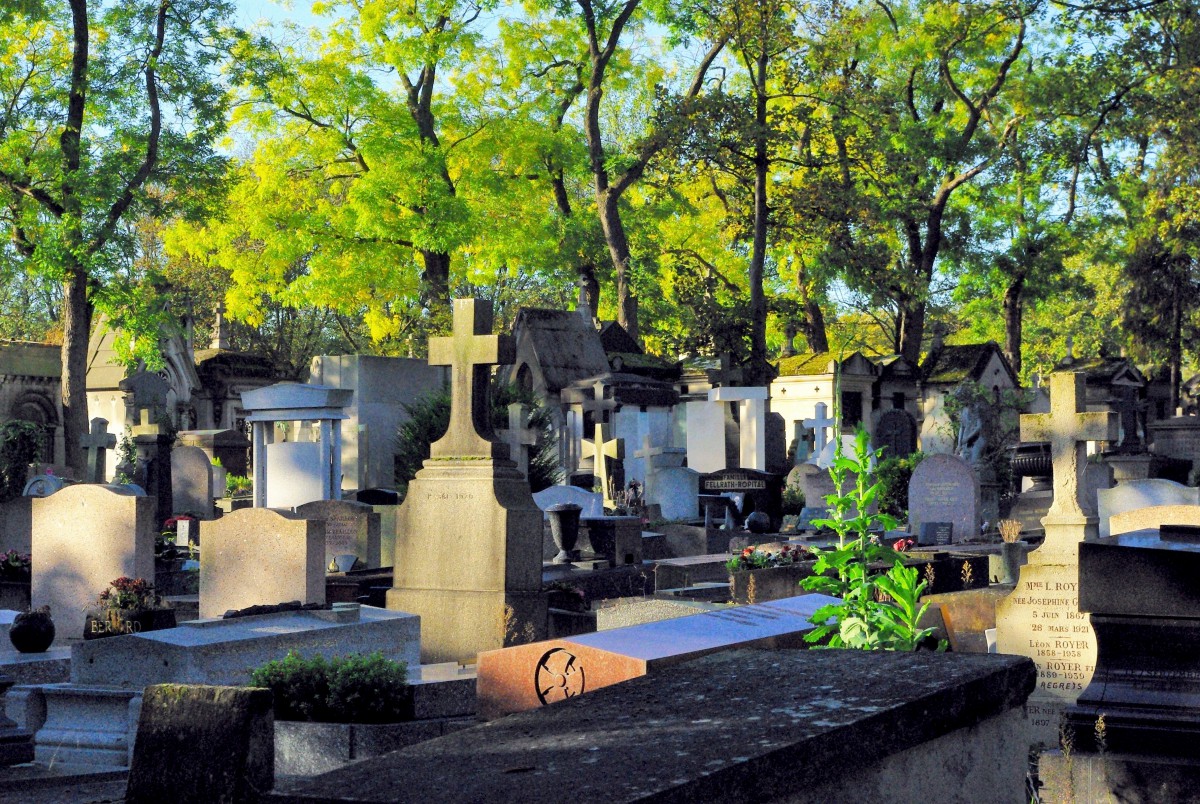
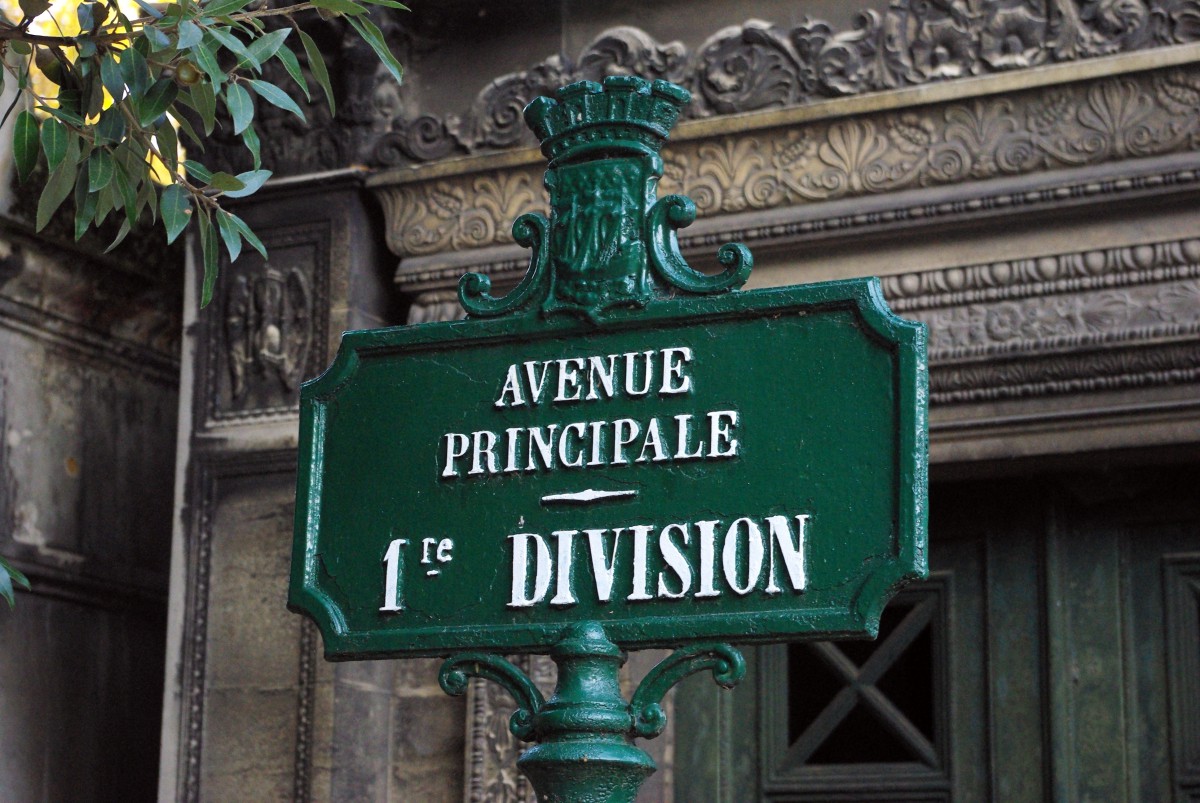

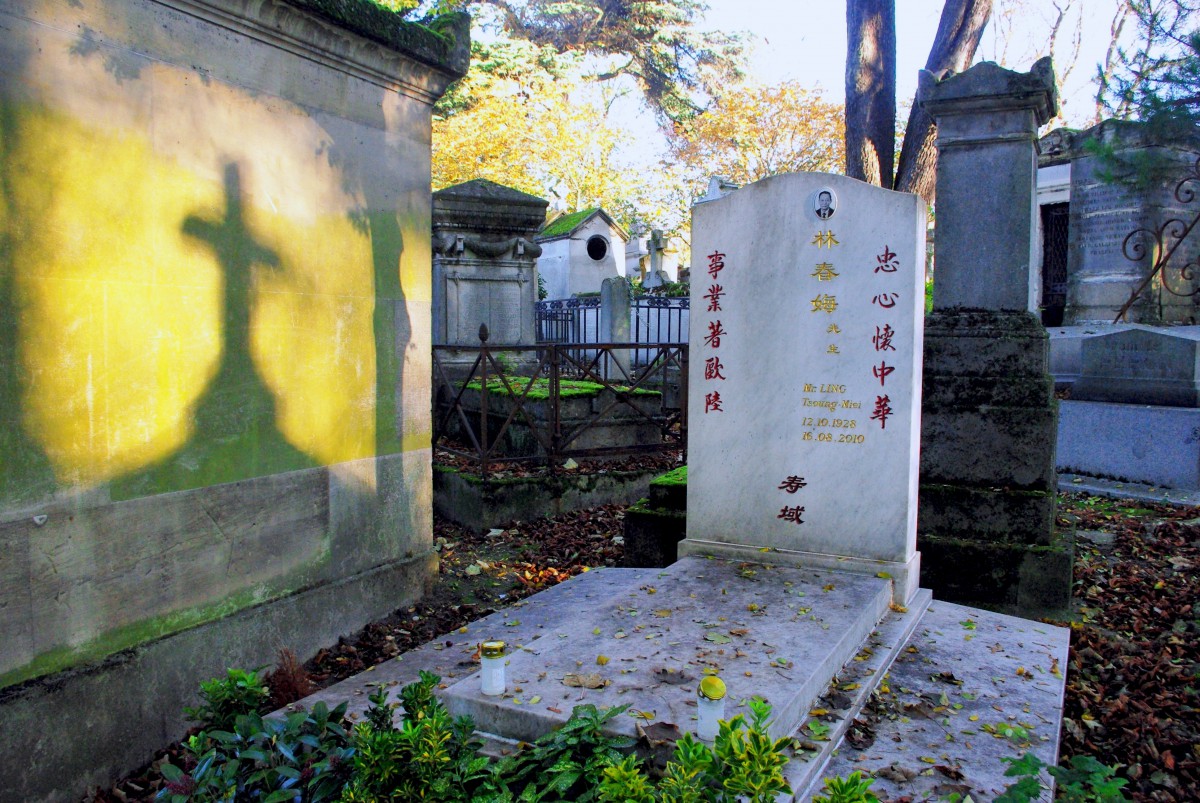
Pin it for later
Did you like what you read? Pin it on Pinterest:
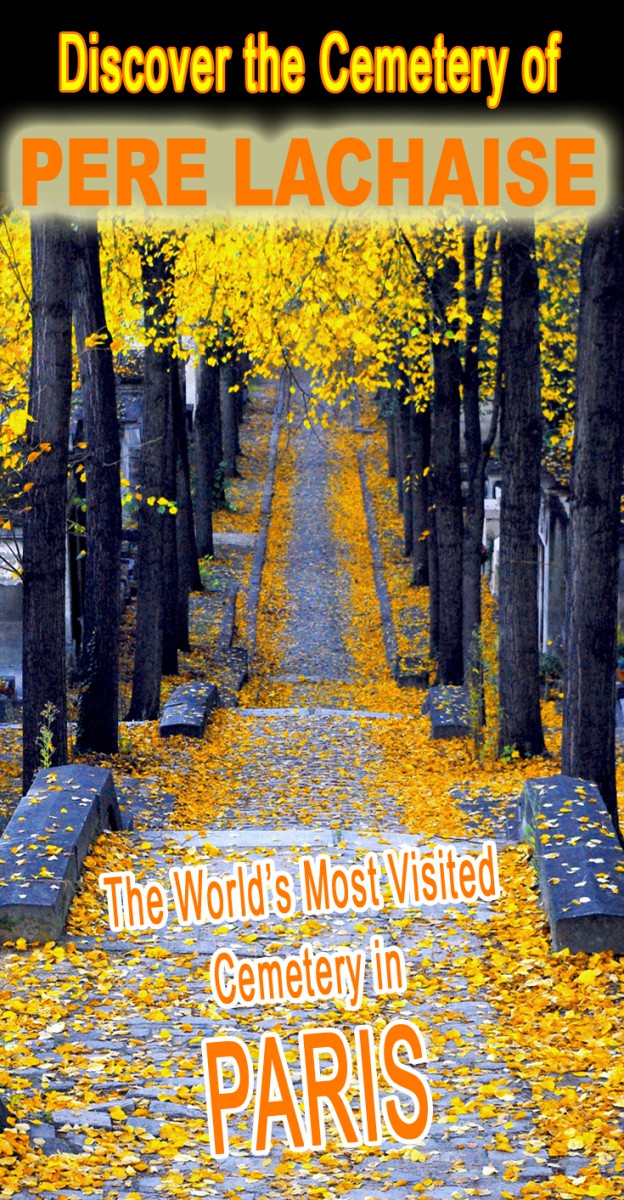




I couldn't agree more with you, Pierre. Although some may think it strange to love a cemetery, Père Lachaise should be on everyone's list to visit. It's beautiful in every season, but I agree that fall is a special time to walk through it. Thank you for this insightful article and the beautiful photos!
Thank you Ellen, you’re very welcome! 🙂
In the early 1970's when I lived in Paris, Jim Morrison's grave was graced with beer cans, not flowers as shown in your picture. It is a gorgeous and peaceful place to walk especially in the Fall.
Thank you for sharing, Connie. I think flowers work better than beer cans! 😂
Yes. One of my fave places in the world. Love it.
Yes, it’s definitely a peaceful place (particularly when throngs of tourists do not come at the same time) !!!
Two of my favorite authors, André Pieyre de Mandiargues and Auguste Villiers de l'Isle-Adam, are buried in the cimetière du Père-Lachaise. I visited the cemetery many years ago, and look forward to visiting it (as a live person) again someday.
Thank you David, I hope you’ll be able to go back to Père Lachaise soon!
Thank you for the beautiful photos–they brought back poignant memories of the times I visited a friend (now deceased) who lived in Paris in the early 2000s. Two Americans with our hesitant French were spontaneously guided by a kind Parisian to Chopin's grave. We loved cemeteries and also visited the Montparnasse cemetery for Susan Sontag–she had been more recently interred and thus difficult to find–we wandered a lot there. Such good memories–of cemeteries!
You’re welcome! Parisian cemeteries are so large that it is easy to get lost. I also spent hours looking for a celebrity’s grave that was well hidden… it’s like a treasure hunt!